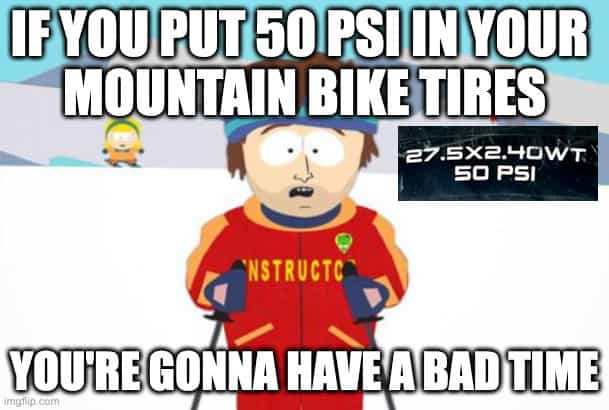Ever looked at your bike’s tire and wondered what all those numbers and letters meant? Some info is standardized, some are brand names and some is simply useless.
Use this infographic for an overview of which labels there are, where you can find them and what each means:
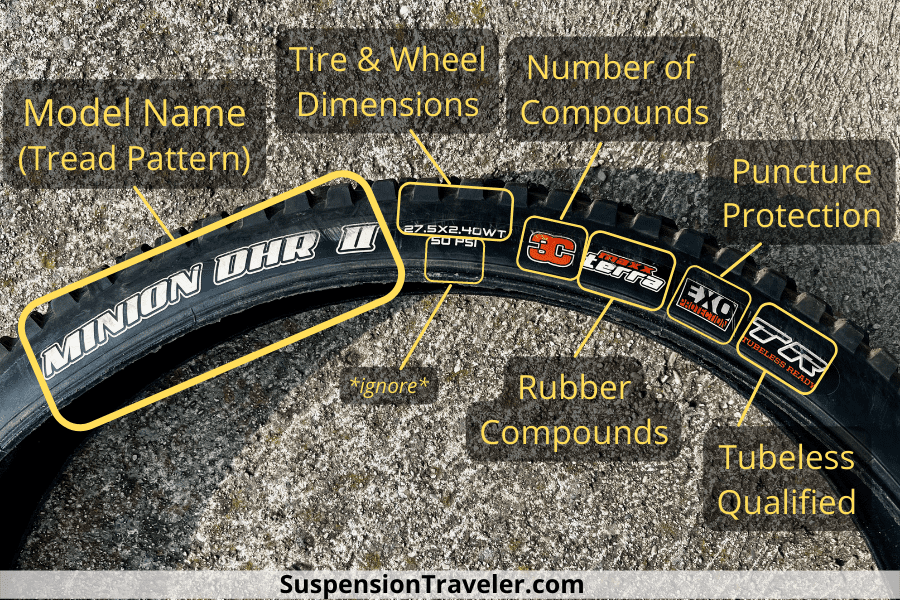
Tire size
The size label looks like this:
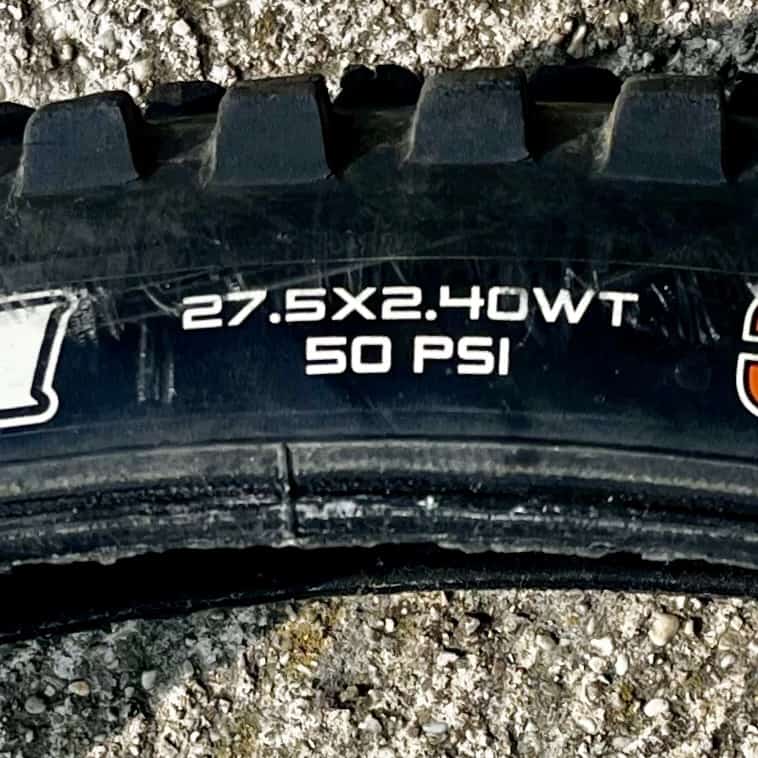
Width and diameter are all the tire dimensions you need to know.
They are the big, bold numbers on your tire. These are standard measurements across all MTB tires.
Example:
27.5X2.40
27.5 refers to the outer diameter in inches
2.40 refers to the tire width in inches
(WT just means Wide Tire, which is basic information for MTB since all are “wide”. Mostly designed for the standard 30mm rim widths.)
If you need help picking the right tire width read my recommended tire sizes for MTB.
Alternative dimension label
If you look closely, you can also find small, hardly legible numbers as well. These are the exact tire dimensions in millimeters.
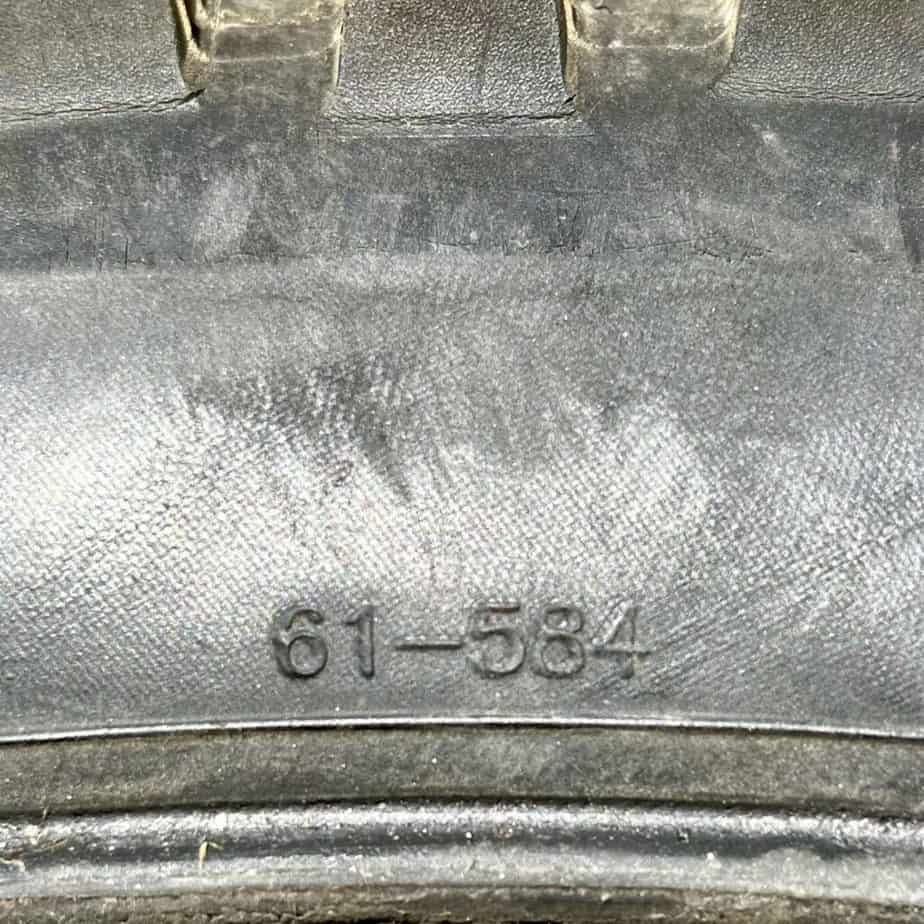
In this example, 61mm is the tire width and 584mm is the inner ream width, also called bead seat diameter.
That info is mandatory but doesn’t give you any helpful information.
Rotation Direction
The rotation label looks like this (it’s a big arrow):
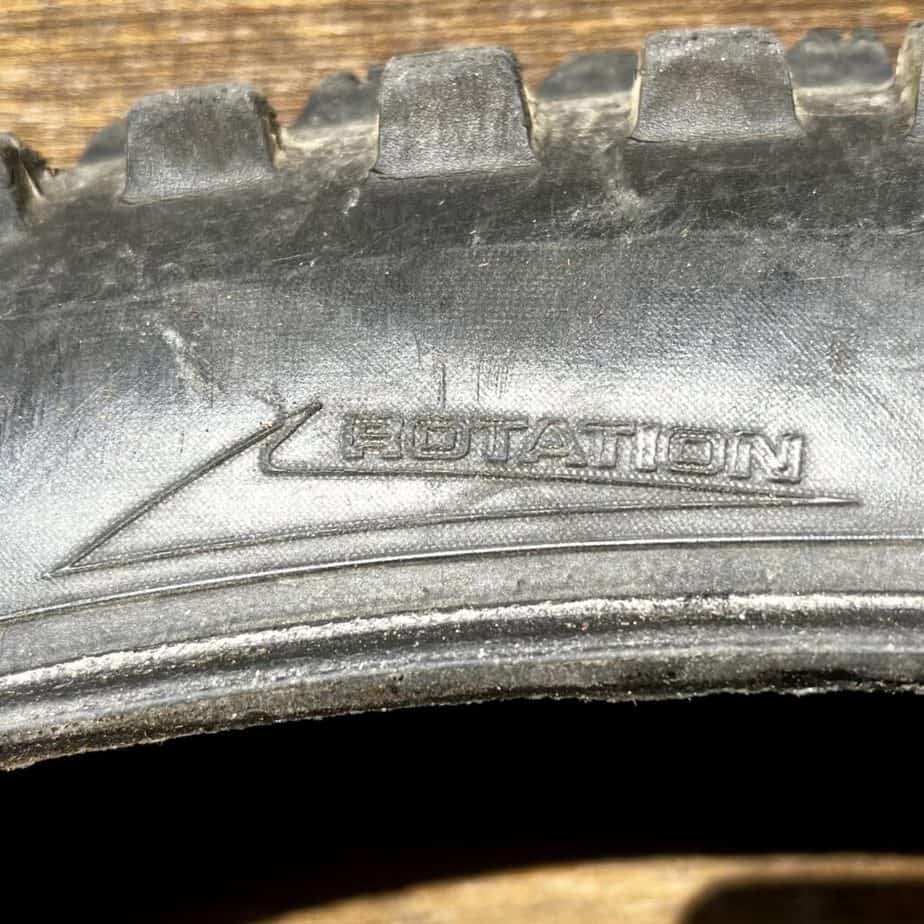
Correct mounting direction is easy to forget, but critical for the tire to work properly. Only then can it roll fast, brake hard and corner aggressively.
Learn more on MTB tire tread patterns and why correct orientation even matters and how to spot the correct rotation even without the label – by knowing how a tire works.
Compound (3C, MaxxTerra, Addix)
The compound label looks like this (it’s some branded name):
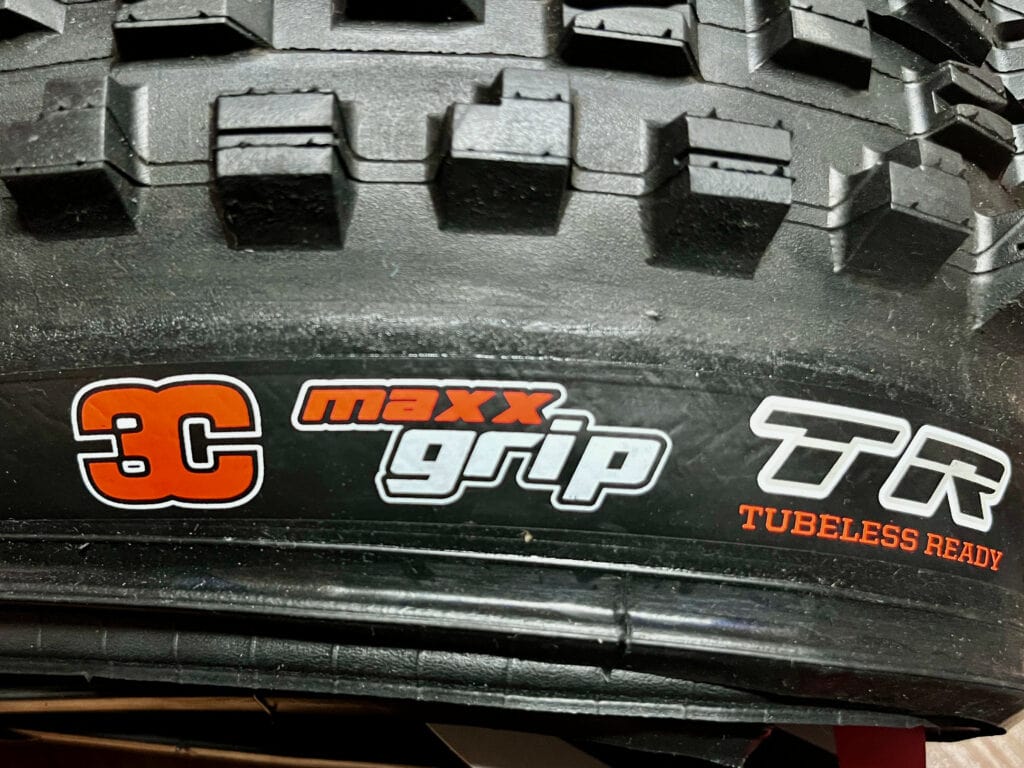
Tire compounds describe how soft or hard the tire knobs are. Harder compounds roll faster and last longer, while softer ones grip better.
Popular tire compounds listed from hardest to softest.
- Maxxis: 3C (MaxxSpeed, MaxxTerra, MaxxGrip)
- Schwalbe: Addix (Speed, Speedgrip, Soft, Ultrasoft)
- Continental: Endurance, Soft, and Super Soft
Related articles: Maxxis MTB compounds explained & Schwalbe MTB tire guide
Casing (60 or 120 TPI)
The TPI label looks like this (it’s not on every tire):
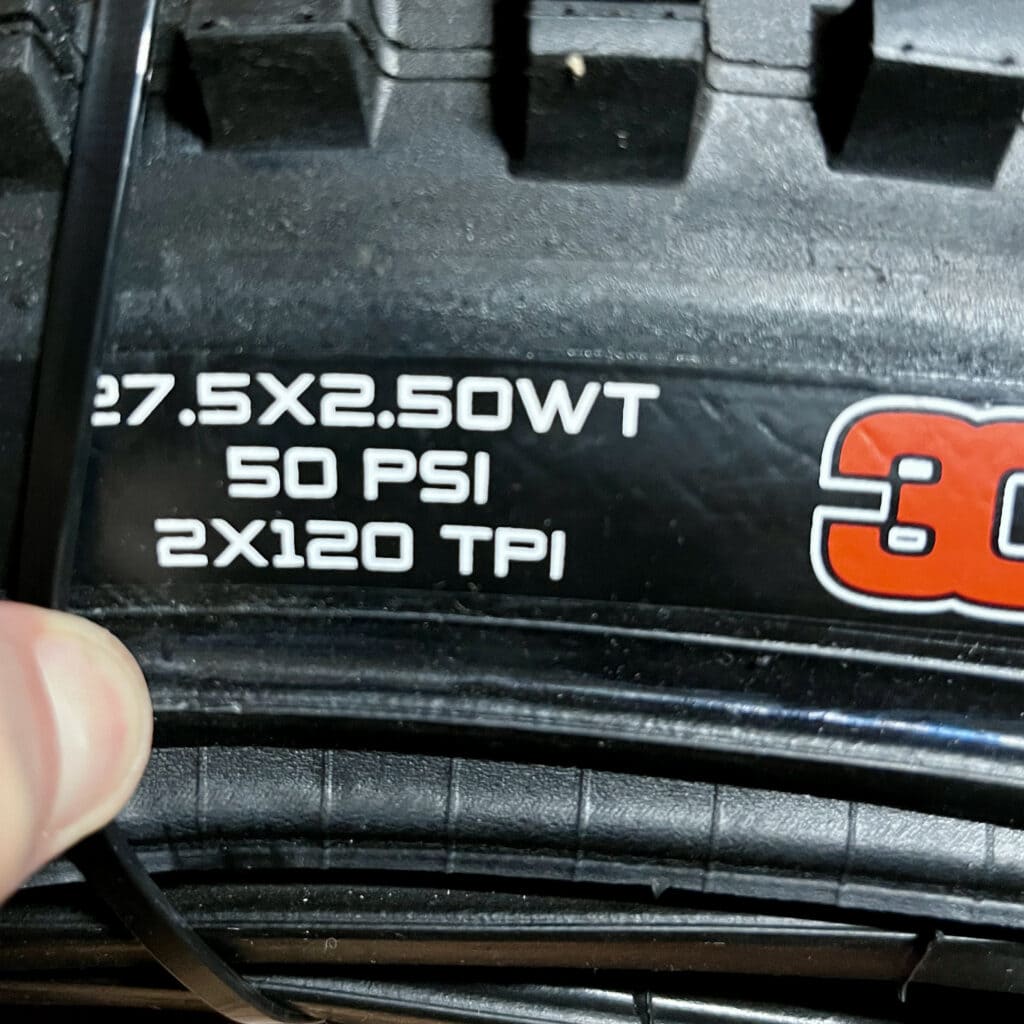
A tire casing is the main body of the tire and the TPI number tells you how thick and stiff, or thin and compliant the casing is.
120 TPI is the thinnest casing used in mountain biking – mostly for XC. 60 TPI offers better puncture protection and is better suited for more aggressive trail riding.
Two-layer (“dual-ply”) casings like 2×120 TPI are used for enduro and downhill. They can withstand hard cornering, big impacts and offer better puncture armor.
Read more on bike tire casings and TPI here.
Puncture protection (EXO, Snakeskin)
The compound label looks like this (branded name or acronym):
- Maxxis: EXO, EXO+, DD, DH
- Schwalbe: (tied to casing)
For most tire brands the flat protection is now tied to the casing to narrow down the insane amount of options we once had.
Tubeless capability (TR, TLE)
The tubeless label looks like this:
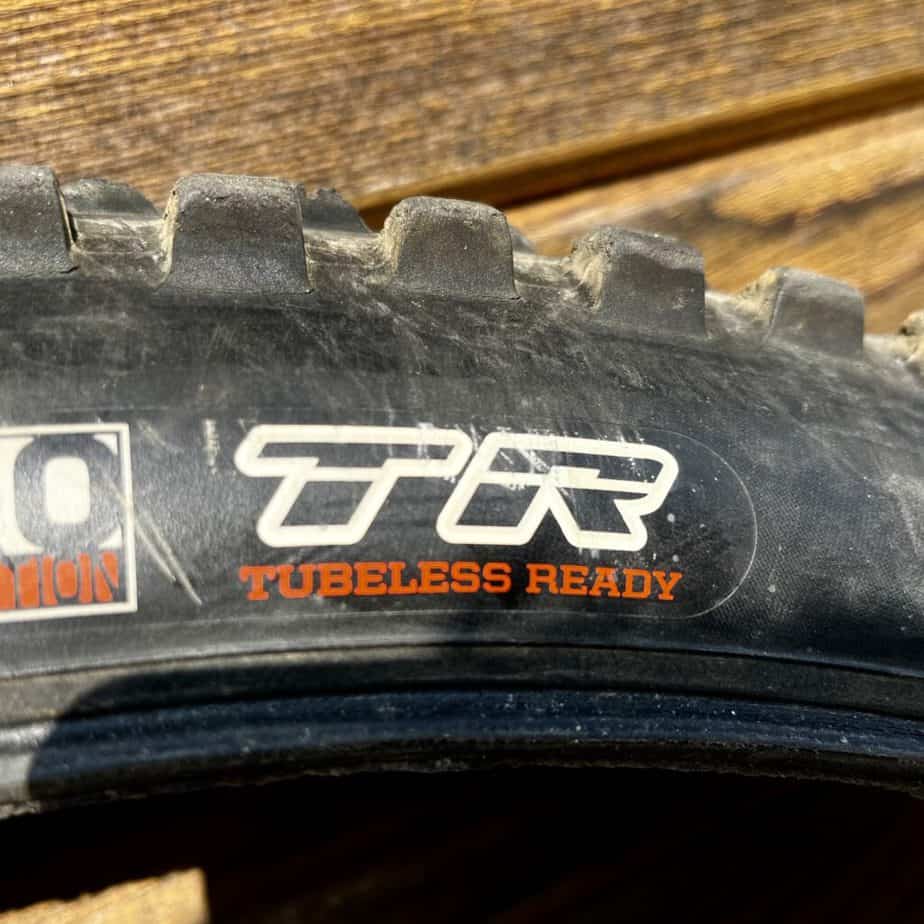
TR or TLE informs you about two things:
- The tire bead (the part pushing against the rim) is shaped in a way so that it locks securely to the rim to make it airtight. Which is especially important under heavy braking.
- The tire is compatible with tire sealants and will not be degraded by them.
Most MTB tires from the top brands are now tubeless-compatible anyway.
PSI label

You can ignore the PSI label. It’s the safe maximum pressure, certainly not anywhere near a tire pressure anyone should ride.
50 PSI is about double the recommended tire pressures for MTB for most riders. Please don’t pump up your tires to the number on the side of your tires!
